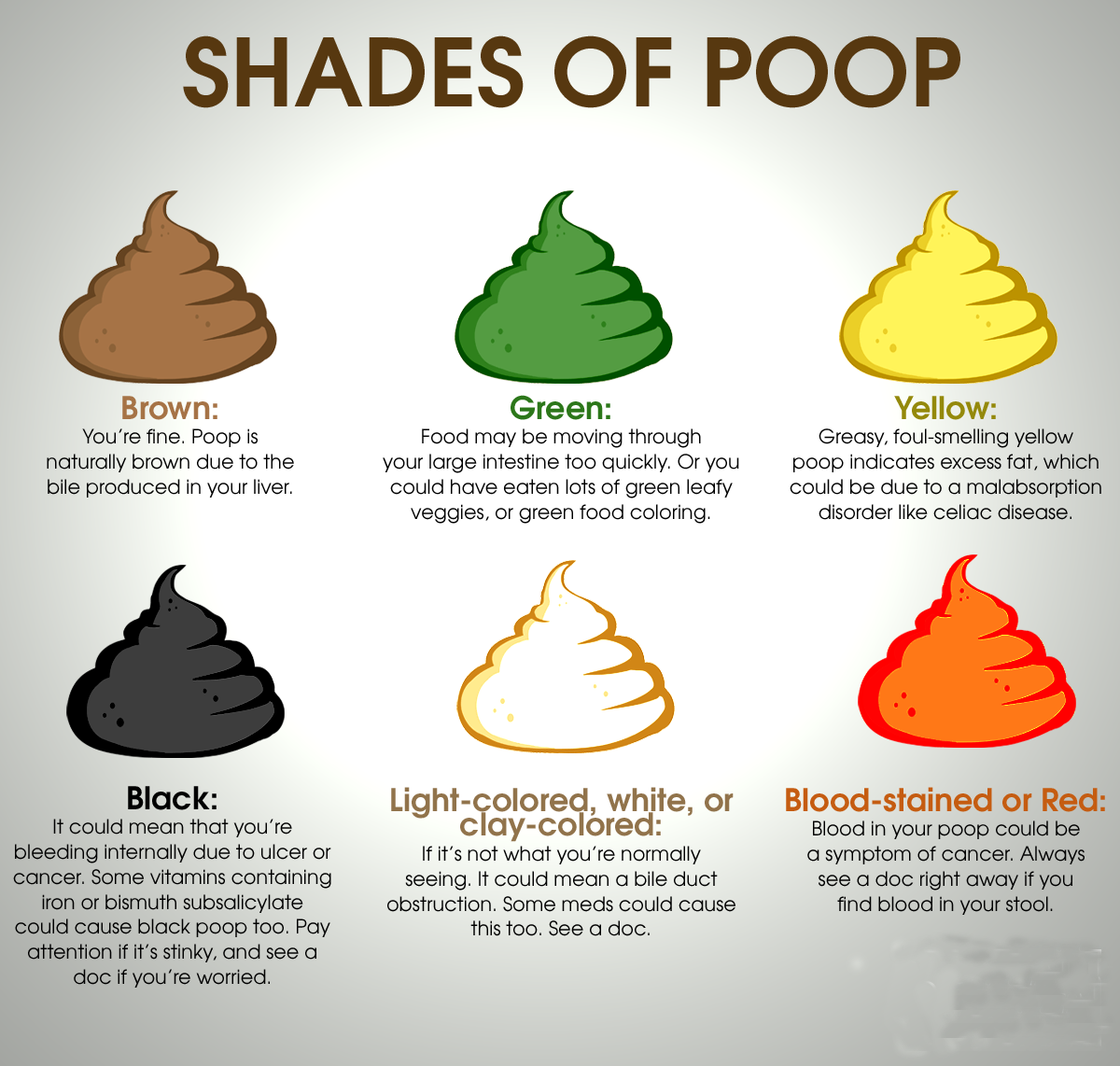Color change in stool. Understanding Different Poop Colors: What They Mean for Your Health
What do different poop colors mean? From green to black, red to white, learn what changes in stool color can indicate about your digestive health.
Normal Poop Color: The Brown Basics
Poop is normally brown in color, a result of the bile produced by your liver to aid in digesting fats. As the bile pigments travel through your digestive system, they undergo chemical changes that turn them brown. This brown hue is the standard for a healthy stool.
Green Poop: A Dietary Difference
Seeing green poop is usually not a cause for concern. This coloration is often attributed to your diet, specifically consuming foods like spinach, kale, or green drink mixes that contain food coloring. The green hue can also be a sign that your food is moving through your digestive system too quickly, not allowing the bile to fully break down and turn brown.
Yellow Poop: Potential Digestion Issues
While yellow poop is common in babies, especially breastfed infants, it may indicate an issue with fat digestion in adults. This greasy, foul-smelling stool can be a sign of conditions like celiac disease, where the body cannot properly process gluten. It can also point to other problems with nutrient absorption in the intestines.

White or Pale Poop: A Lack of Bile
If your stool appears pale, gray, or clay-colored, this may signal a problem with your bile production or flow. Conditions like liver disease, gallstones, or blockages in the bile ducts can prevent sufficient bile from reaching the intestines, resulting in this lighter colored poop.
Black Poop: A Potential GI Bleed
While black, tarry stools can sometimes be caused by iron supplements or dark-colored foods, this coloration can also signify bleeding in the upper gastrointestinal tract. Causes range from stomach ulcers to cancer, so it’s important to discuss black poop with your doctor.
Red or Reddish Poop: Blame the Beets
Seeing red in the toilet bowl may be alarming, but this hue is commonly caused by foods like beets, tomato soup, or red gelatin desserts. If the red color is not diet-related, it could indicate bleeding lower in the digestive tract and should be evaluated by a medical professional.
When to Seek Medical Attention
While minor changes in stool color are often harmless and related to diet, persistent or unexplained alterations may warrant a visit to your doctor. Sudden or dramatic shifts in poop color, as well as accompanying symptoms like abdominal pain, diarrhea, or constipation, could signal an underlying health condition that requires further investigation and treatment.

The color of your stool can provide valuable clues about the state of your digestive health. By understanding what different poop colors mean, you can be better equipped to identify potential issues and seek timely medical care if needed. Remember, when it comes to changes in your bowel movements, it’s always better to err on the side of caution and consult your healthcare provider.
Frequently Asked Questions
What does it mean if my poop is green?
Green poop is often caused by eating green vegetables, green drinks, or other foods with green coloring. It can also be a sign that food is moving too quickly through the digestive tract, not allowing enough time for the bile to fully break down and turn the stool brown.
Is yellow poop always a sign of something wrong?
While yellow poop is common in breastfed babies, in adults it may indicate an issue with fat digestion or malabsorption of nutrients. Greasy, foul-smelling yellow stool could be a symptom of conditions like celiac disease or other problems with the pancreas or intestines.

What causes black or tarry stools?
Black, tar-like stools can be caused by consuming certain foods or medications, such as iron supplements or bismuth-containing antacids. However, this coloration can also signify bleeding in the upper gastrointestinal tract, which requires prompt medical attention.
Do red or reddish stools always mean bleeding?
Not necessarily. Red poop can often be attributed to eating brightly colored foods like beets, tomatoes, or red gelatin. If the red color is not diet-related, it may indicate bleeding lower in the digestive tract and should be evaluated by a doctor.
What Do Different Poop Colors Mean?
Written by Hope Cristol
- What Do Different Stool Colors Mean?
- Normal Poop Color
- Green Poop
- Yellow Poop
- White, Pale, or Clay-Colored Poop
- Black Poop
- Red or Reddish Poop
- Orange Poop
- When to Get Help for Poop Color Changes
- More
Different stool colors can mean different things, mostly depending on what you’ve eaten.
You’d probably notice if your poop is a different hue than normal. But what does it mean if it’s green? What about red, yellow, white, or black? Or orange?
Most of the time, minor changes in the color of your waste are due to diet. After all, we don’t eat the same thing at every meal, every day. But sometimes a color change can signal a minor health issue. In rare cases, it means something serious is wrong in your digestive system.
If the color you see before you flush worries you, call your doctor.
Poop is normally brown. The color is the result of what you eat and how much bile is in your stool.
The color is the result of what you eat and how much bile is in your stool.
Bile is a fluid your liver makes to digest fats. It starts out as a yellowish green color. But as the pigments that give bile its color travel through your digestive system, they go through chemical changes and turn brown.
Your poop can sometimes have a slightly greenish hue, or even be a more vivid green. Most of the time, green or greenish poop is normal.
Is your diet causing green poop?
Think back on what you’ve been eating. These foods and supplements can cause your poop to be green:
- Green veggies, like spinach or kale
- Green food coloring, such as in drink mixes or ice pops
- Iron supplements
Other causes of green poop
If you have green diarrhea, the color of your food may not be to blame. It’s likely that your meal moved through your gut too quickly, so the fat-digesting bile didn’t have time to turn brown.
There may be times when your poop looks more yellow than brown.
This shade is also normal for many people. It’s common for babies, especially those who breastfeed. But if you have yellow poop that looks greasy and smells very bad, it may have too much fat. That could be a sign your body isn’t digesting food properly.
Is your diet causing yellow poop?
Indirectly, your diet could cause yellow poop. If you have celiac disease, your body can’t handle a protein called gluten, which is in wheat, barley, and rye. If you have the condition and eat foods that have gluten, like many breads, pastas, and cookies, your intestines won’t work as they should. So, if you’re eating those foods, and your poop is yellow, it may be time to see a doctor.
Other causes of yellow poop
There may be other causes of yellow poop that’s greasy and smelly. If it happens to you often, tell your doctor.
Sometimes, poop may not have much color at all.
Is your diet causing pale poop?
If your poop is pale, it’s not likely directly due to a food. But medicines for diarrhea like bismuth subsalicylate (Kaopectate, Pepto-Bismol) can sometimes cause pale or clay-colored poop. So can barium, a chalky liquid you drink before you get X-rays of the upper part of your digestive tract.
Other causes of pale poop
A more serious cause is a lack of bile in your stool. (Remember, bile gives poop its brown color.) Your body makes bile in the liver, stores it in the gallbladder, and releases it into your small intestine to help digest your food. If there’s not enough of it to give your poop its typical brown color, it could be a sign of a problem along the way.
Liver disease, such as hepatitis, can keep bile from getting into your body waste. So can a blockage in the tubes (called ducts) that carry bile. This can happen because of:
- Gallstones
- A tumor
- A condition you’re born with called biliary atresia
Babies’ poop is black for the first few days after they’re born. Otherwise, it may be because you ate something very dark-colored or took a medicine or supplement that causes black poop. But this color can be a sign of a more serious problem: bleeding in the upper part of your digestive tract.
Otherwise, it may be because you ate something very dark-colored or took a medicine or supplement that causes black poop. But this color can be a sign of a more serious problem: bleeding in the upper part of your digestive tract.
Is your diet causing black poop?
Foods and supplements that turn poop black include:
- Black licorice
- Blueberries
- Iron supplements
Medicines that have bismuth subsalicylate (Kaopectate, Pepto-Bismol) can also cause very dark stools.
Other causes of black poop
Poop that looks like tar is often a sign of bleeding in the digestive tract. Some causes include:
- Bleeding from stomach ulcers
- Bleeding sores in your esophagus from acid reflux
- Bleeding from noncancerous tumors in the upper GI tract
- Cancer
If you don’t think black poop came from what you ate, you need to talk to your doctor.
If you see red or reddish poop in the toilet, don’t be alarmed right away. First ask yourself if you’ve had red foods lately.
First ask yourself if you’ve had red foods lately.
Is your diet causing red or reddish poop?
Several foods can change the color of your stool to a pink or reddish color:
- Beets
- Tomato soup
- Gelatin dessert
- Red drinks
Other causes of red or reddish poop
If you don’t think your diet is the cause, the red you see may be blood. And if it’s bright red, the blood likely comes from the lower part of your digestive tract. Common causes include:
- Noncancerous tumors
- Cancer
- Inflammation in the colon, called colitis
- Growths called polyps in your colon
- Conditions caused by small sacs in the wall of the colon, called diverticular disease
- Hemorrhoids
Call your doctor if you see red that’s probably not from food you ate.
Poop can often come out the color of the food that went in, especially if you have diarrhea. If your poop has an orange hue, it’s most likely due to some orange foods.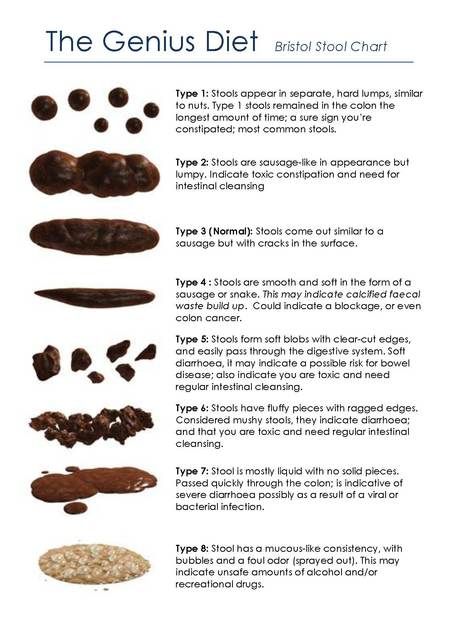
Is your diet causing orange poop?
Foods that have beta-carotene can turn your poop orange, such as:
- Carrots
- Winter squash
- Pumpkin
- Sweet potatoes
Foods with orange coloring, such as sodas, candy, or gelatin dessert, can also give your poop an orange color.
Also, antibiotics and antacids that have aluminum hydroxide in them can make your stool orange.
Other causes of orange poop
Rarely, poop can be orange if you have a problem with your liver that causes it to make less bile than normal, or a blockage that keeps bile from leaving the liver and entering your system. But usually, if this is the case, your poop will be pale or clay-colored.
Most of the time, poop that’s a different color from what you’re used to isn’t something to worry about. It’s rare for it to be a sign of a serious condition in your digestive system. But if it’s white, bright red, or black, and you don’t think it’s from something you ate, call your doctor.
Top Picks
Why is my poop green? Stool colors explained
Poop can turn green for many reasons, including a diet rich in high chlorophyll plants. Other possible causes include antibiotic use and bacterial infections.
Poop is generally brown, but, at times, it can turn green, red, black, yellow, or any color in between. Many of these color changes do not signal a medical condition, but some can be signs of something more serious.
This article discusses poop color, what it means, and when to speak with a doctor.
Fast facts on poop color
- Certain foods and drinks can affect poop color.
- Poop can turn green as a result of diarrhea.
- A person should inform their doctor of long-term changes in poop color.
Was this helpful?
What makes poop green? Green stool is usually the result of eating a large quantity of leafy, green vegetables. Specifically, the chlorophyll in the plants produces the green color. Alternatively, children might have green stool after eating artificially colored frosting at a birthday party.
Certain foods in a person’s diet are by far the most common causes of green poop. However, people who do not eat a lot of greens or food coloring should be wary, as green poop can have a more serious cause.
Possible causes include:
- Bile pigment: Stool may be green due to the presence of bile pigment. If food moves too quickly through the intestine, bile pigment cannot break down sufficiently. One potential cause of this is diarrhea.

- Antibiotics: Antibiotics can change the types of bacteria present in the gut. Because bacteria influence the typical color of poop, a change in bacteria may mean a change in stool color, often to green.
- Certain medical procedures: For instance, a person whose body rejects a bone marrow transplant may develop graft-versus-host disease. Diarrhea and green stool are symptoms of this condition.
- Parasites and bacteria: Certain pathogens can cause poop to turn green, including the Salmonella bacterium, the water-based parasite Giardia, and norovirus. These unwelcome guests can cause the guts to work faster than usual, impacting stool color.
People who think their green stool is not the result of a diet rich in vegetables or green food coloring should discuss it with a doctor.
Stool is usually light to dark brown. A substance from red blood cells called bilirubin gets processed and ends up in the intestines.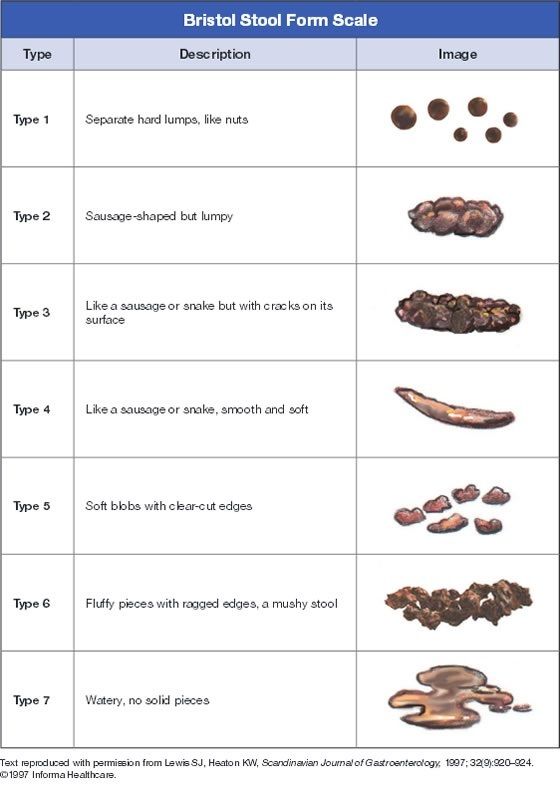 Bacteria then break it down further, and it turns stool brown.
Bacteria then break it down further, and it turns stool brown.
So, what does it mean when the color of poop suddenly changes, and what are some possible causes?
Changes in diet can produce varying stool colors. Eating beets, high chlorophyll green vegetables, or licorice can significantly change stool color. Drinking Guinness or drinks that contain heavy dye, such as Kool-Aid, can have a similar effect.
In infants, foods may cause color changes, such as:
- Green: spinach, breastmilk, formula
- Red: beets, tomato soup, cranberry juice or other red drinks
- Black: licorice, grape juice
However, some causes of non-brown stool are more serious, and it is important to deal with these issues immediately.
Health conditions that may change the color of stool include:
- tears in the lining of the anus
- gallbladder disease
- celiac disease
- ulcerative colitis, a condition in which typically only the luminal layer inside the large intestine lining is inflamed
- Crohn’s disease, a condition in which all layers of the small and large intestines can become inflamed
- cancerous tumors in the GI tract
- cancers of other digestive organs
- diverticular disease, a condition in which pouches form in the large intestine
- bacterial or parasitic infections — for instance, Salmonella and Giardia can both lead to green stools
- piles, also known as hemorrhoids
- bleeding in the gut
It is difficult to consistently relate a precise color to each condition. However, here are some possible connections between colors and conditions:
However, here are some possible connections between colors and conditions:
- Reddish or maroon: This can be a sign of bleeding somewhere in the GI tract.
- Yellowish, greasy, smelly: This can indicate an infection in the small intestine. It could also be a sign of excess fat in the stool due to a malabsorption disorder, such as celiac disease.
- White, light, or clay-colored: This can indicate a lack of bile in the body, possibly from a blocked bile duct. Certain medications, such as bismuth subsalicylate — e.g., Pepto-Bismol — and other antidiarrheal medications, can also cause this discoloration.
- Black or dark brown: This can be a sign of bleeding in the upper GI tract, such as the stomach. Alternatively, it could be the result of iron supplements or bismuth subsalicylate.
- Bright red: Bleeding in the lower digestive tract, such as the rectum, or hemorrhoids, which are also called fissures, may cause bright red stool.
 Alternatively, red stool may be due to consumption of red food coloring, cranberries, beets, tomato-based products, or red gelatin.
Alternatively, red stool may be due to consumption of red food coloring, cranberries, beets, tomato-based products, or red gelatin. - Green: Large quantities of green dye or green vegetables, antibiotics, or a GI tract infection may cause green stool.
If any discoloration persists, it is important that a person see a doctor instead of trying to work it out on their own.
The more serious possible causes of stool discoloration include conditions such as diverticulitis, Crohn’s disease, ulcerative colitis, and cancer, which usually manifest with bleeding from the lower GI tract.
Important symptoms to look out for include:
- dark, tarry stools
- red or maroon stools
- large amounts of blood passed from the rectum
- blood in the toilet bowl
- an itchy anus
- swollen blood vessels in the rectum
- small tears in the skin of the anus
- an urge to keep passing stools even when the bowel is empty
- a small channel developing between the distal end of the large bowel and the skin near the anus
In addition to any traces of blood in the stool or bleeding from the anus, pay attention to any other symptoms that occur with stool discoloration.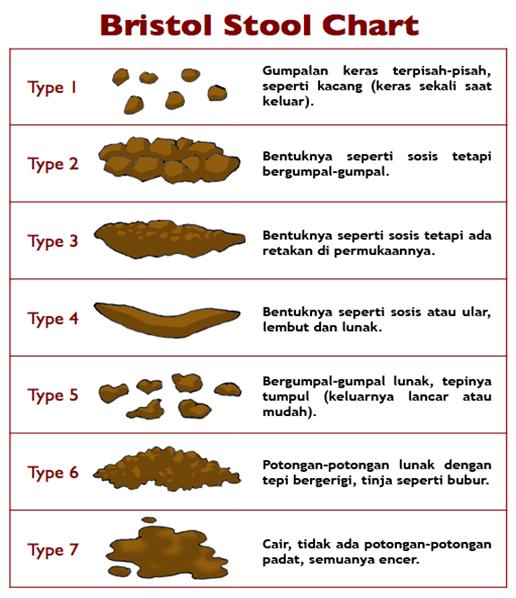 These may include nausea, vomiting blood, or a feeling of fullness.
These may include nausea, vomiting blood, or a feeling of fullness.
A person should seek the advice of a doctor immediately if any of these symptoms persist.
Common causes of rectal bleeding include:
- piles, as known as hemorrhoids
- inflammatory bowel disease
- tears in the lining of the anus, also known as fissures
- anal fistula, a small channel that develops between the inside of the anus and the skin near the anus
- gastroenteritis, which is inflammation of the gut
- diverticular disease
- bowel cancer, such as small intestine or colorectal cancer
It is worth having a quick look at stool before flushing it away. Stool is a very good indicator of whether the digestive system is working properly. It may provide a clue to illnesses such as those mentioned above.
According to the Bristol Stool Chart, there are seven shapes and consistencies of human stool. Each one denotes something about a person’s diet or body.
The Bristol Stool Chart
- Type 1: separate, hard lumps, similar to nuts — often hard to pass
- Type 2: sausage-shaped but lumpy
- Type 3: sausage-shaped but with cracks on the surface
- Type 4: sausage- or snake-like, smooth and soft
- Type 5: soft blobs with clear-cut edges — easy to pass
- Type 6: fluffy, mushy pieces with ragged edges
- Type 7: watery with no solid pieces — entirely liquid
As a general rule, type 3 or 4 is the ideal stool, as it is easy to pass but not too watery. Type 1 or 2 means that a person is probably constipated. Type 5, 6, or 7 indicates that a person probably has diarrhea.
This chart helps doctors identify problems and correlate the time food takes to pass through the digestive system. The shape and form of stool may also help doctors make a correct diagnosis.
The most important thing to do to regulate stool color is to eat a healthy diet. The ideal stool color is light to dark brown. Some people who eat large quantities of greens may pass green poop.
The ideal stool color is light to dark brown. Some people who eat large quantities of greens may pass green poop.
Having green poop isn’t usually a cause for concern. However, it is important to keep an eye on both the color and the texture of stool. Anyone who is concerned about the color of their stool should discuss it with a doctor.
Learn more about how the Squatty Potty may improve bowel movements.
Read the article in Spanish.
Why adult stool color changes and how to treat it
Content
- 1 Adult stool color: why does it change and what are the colors?
- 1.1 Why does stool color change in adults?
- 1.2 What is stool and what does it do
- 1.3 Normal stool color in adults and what it means
- 1.4 Causes of discoloration of stool in adults
- 1.5 What does change in stool color mean?
- 1.6 Which diseases can change the color of feces in adults
- 1.7 How to diagnose the causes of discoloration of feces in adults
- 1.
 8 How to return the color of feces to normal?
8 How to return the color of feces to normal? - 1.9 What treatments are used to restore stool color in adults
- 1.10 How does the duration of stool color change relate to the disease in adults
- 1.11 When to see a doctor if stool color changes
- 1.12 Related videos:
- 1.13 Question – answer:
- 1.13.0.1 Why does the color of feces change in adults?
- 1.13.0.2 How can adult stool color changes be treated?
- 1.13.0.3 What other symptoms may accompany discoloration of stool in adults?
- 1.13.0.4 Which foods can affect stool color in adults?
- 1.13.0.5 Can the use of antibiotics affect the color of stool in adults?
- 1.13.0.6 What other causes of discoloration of feces can be in adults?
What color of feces is considered normal in adults, and what color indicates the presence of a disease? Find out the causes of discoloration of feces and the treatment methods for each case. Seek medical attention if you notice changes in your stool, which could be signs of a serious illness.
Seek medical attention if you notice changes in your stool, which could be signs of a serious illness.
The color of feces is one of the key indicators of the functioning of the human gastrointestinal tract. Usually it has a light shade, but in some cases the shade can change to black or red, which indicates various disorders in the body.
To correctly determine the factor that caused the change in stool color, it is necessary to analyze its brightness, saturation and the presence of other symptoms of the disease. For example, black feces can indicate bleeding from the upper gastrointestinal tract, and mushy stools can indicate indigestion and dysbacteriosis.
To seek help from a doctor in case of a change in the color of feces, it is necessary that this phenomenon recurs for more than 3 days within a month, additional signs appear in the form of pain, diarrhea, nausea or vomiting. The doctor will diagnose and decide how to treat changes in the color of the stool and write out recommendations for improving the physical indicators associated with it.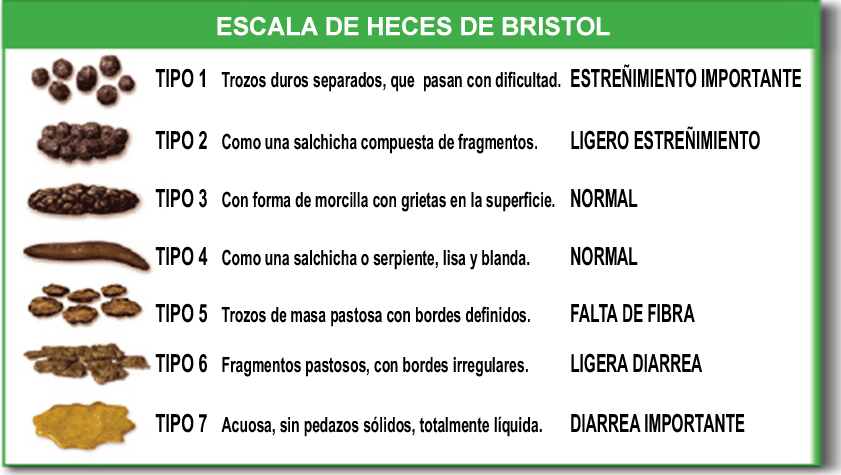
Why does the color of feces change in adults?
The color of feces is an important indicator of a person’s health. The normal color of stool is usually yellowish brown. However, in adults, feces of an unusual color can sometimes appear. Here are some possible reasons:
- Food. Excessive consumption of foods containing dyes, such as red meat, beets, caramel, can lead to discoloration of the stool.
- Problems with the digestive system. Dysfunction of the liver, biliary tract, or pancreas may lead to discoloration of the stool. For example, green stools can be a sign of a gallbladder malfunction.
- Medications. Some medicines can affect the color of stool. For example, iron preparations can make stool black, and bismuth-based preparations can turn black or dark gray.
If the discoloration of the stool is not related to diet, then this may be a sign of an illness and a doctor’s consultation is required. He will conduct an examination and prescribe treatment depending on the cause of the change in the color of the feces.
He will conduct an examination and prescribe treatment depending on the cause of the change in the color of the feces.
What is feces and what does it do
Feces are waste products from the body’s digestive system that exit the body through the rectum. It consists of undigested food, water, pathogenic bacteria and other substances.
Tracking stool color can help identify the presence of digestive system disorders. If the color of the feces is unstable and changes over time, this may indicate problems with digestion or a violation of the liver. You need to see a doctor for diagnosis and treatment.
Normal stool color in adults and what it means
Stool color in adults can vary from light yellow to dark brown. This is normal and indicates the proper functioning of the digestive system.
Light yellow stools may result from the consumption of numerous animal or plant foods rich in carotene. Dark brown stools are usually indicative of healthy liver function, which secretes bile needed to digest fats.
This is important to remember because changes in stool color can indicate problems in the body. For example, black stools may indicate bleeding in the gastrointestinal tract, while white stools may indicate problems with the biliary tract.
If you have any doubts or questions about the color of your stool, do not hesitate to contact your doctor for a more accurate diagnosis and treatment.
Causes of discoloration of feces in adults
Feces in adults can change color for various reasons. One of the most common is indigestion. For example, eating foods high in iron can turn stool black. Also, if you consume a lot of red berries and fruits, the feces can turn red.
If your stool has an unusual color and you also notice a change in appetite, occasional abdominal pain or other symptoms, you should seek medical advice. Only a professional diagnosis can determine the exact cause of the change in stool color and prescribe competent treatment.
What does change in stool color mean?
Cal is one of the main indicators of the health of the human body.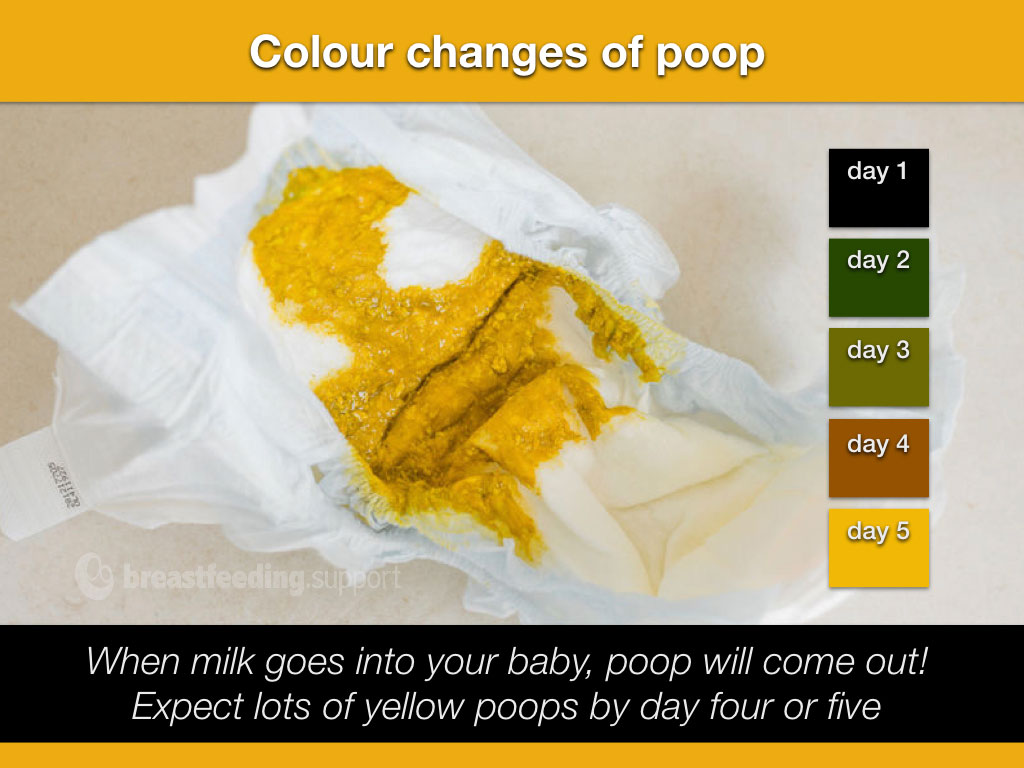 Changes in its color can indicate various problems associated with the digestive system. Black, light, red, or green stools may indicate the presence of certain diseases or problems that need to be addressed.
Changes in its color can indicate various problems associated with the digestive system. Black, light, red, or green stools may indicate the presence of certain diseases or problems that need to be addressed.
- Black stool may indicate the presence of blood in the stomach or intestines. Also, black feces can be the result of taking medications such as iron or activated charcoal.
- Light stool may be a sign of insufficient bile production or pancreatitis, an inflammation of the pancreas.
- Red stool is often a sign of intestinal bleeding, hemorrhoids, or urinary tract infection.
- Green feces may be associated with the consumption of certain foods or a possible disturbance of the intestinal flora.
In any case, if the color of the feces changes, it is recommended to consult a doctor and undergo appropriate examinations to identify the causes and prescribe the correct treatment. You should not postpone going to the doctor, because. some diseases associated with the color of feces can pose a serious threat to human health and life.
You should not postpone going to the doctor, because. some diseases associated with the color of feces can pose a serious threat to human health and life.
Which diseases can change the color of feces in adults
The color of feces is one of the main indicators of the health of the human digestive system. It can change under the influence of various factors, including diseases.
Icteric stools may be associated with diseases of the biliary system, such as jaundice or obstruction of the biliary tract. Also, this color of stool can be caused by taking certain medications and supplements that contain a yellow pigment.
Red stools often indicate bleeding in the intestines, which can be caused by ulcerative colitis, rectal fissures, colon cancer and other diseases. It is also possible to have red stools after eating red foods or drinks, such as beets or red wine.
Black stools may be caused by bleeding from the upper digestive organs, such as the stomach or duodenum, but may also be associated with iron supplements or activated charcoal.
White or very light stools may be a sign of a bile secretion disorder such as jaundice or hepatitis, but may also be caused by fatty liver or hepatitis.
If the color of the stool does not change for a long time, or these changes are accompanied by other symptoms, such as abdominal pain, then it is imperative to consult a doctor.
How to diagnose the causes of changes in stool color in adults
The color of stool can change under the influence of various factors. In order to make a correct diagnosis and prescribe the appropriate treatment, it is necessary to determine the cause of the change in stool color.
In addition, instrumental methods such as colonoscopy, abdominal and hepatobiliary ultrasound may be performed to determine the causes of stool color changes.
It is important to note that discoloration of stools can be a symptom of serious conditions such as bowel cancer, so it is important to see a doctor at the first sign of discoloration of stools and not self-treat.
How can I get my stool color back to normal?
Discoloration of the stool can be the result of poor diet, the use of certain drugs, and an indicator of disease of the internal organs. If you notice a change in the color of the feces, you should consult a doctor for a thorough examination.
However, there are a few steps you can take on your own to get your stool color back to normal:
- Change your diet. Eat more vegetables, fruits and healthy fats. Avoid fried, fatty and spicy foods, as well as alcohol and coffee.
- Drink enough water. For normal digestion, it is necessary to allocate a sufficient amount of liquid.
- Pay attention to the medicines you take. Some medicines can affect the color of stool. If you notice a change in color after you start taking medication, contact your doctor.
- Exercise. Regular exercise helps improve intestinal motility and speed up the digestion process.

However, if the discoloration of the stool persists after the measures taken, you should immediately consult a doctor for a more detailed examination and treatment.
What treatments are used to restore stool color in adults
Discoloration of stool can indicate various diseases of the gastrointestinal tract. To restore its normal color, it is necessary to find out the reason for its change and treat it.
Some treatments that can be used to restore stool color in adults include:
- Diet. Avoiding certain foods, such as alcohol, fatty and spicy foods, helps to improve the functioning of the gastrointestinal tract and restore normal stool color.
- Preparations containing choleretic components. These drugs can be used to increase the level of bile in the body, which will not only restore the color of the stool, but also improve the regularity of bowel movements.
- Antibiotics.
 In the event that the discoloration of the stool was caused by an infection in the gastrointestinal tract, antibiotics will help eliminate the bacteria and restore normal stool color.
In the event that the discoloration of the stool was caused by an infection in the gastrointestinal tract, antibiotics will help eliminate the bacteria and restore normal stool color.
You should always consult with your doctor to get complete information about the methods of treatment for stool discoloration and to choose the most appropriate method for a particular case.
How the duration of stool color change is associated with disease in adults
Stool color is an important indicator of human health. The normal color of feces for an adult is brown. However, if the color of the feces does not correspond to the norm for a long time, this may indicate the presence of a disease.
There are other causes of stool discoloration, such as drugs, infections, growing tumors. Therefore, it is very important not to ignore even slight changes in the color of feces, but to consult a doctor in a timely manner to diagnose and treat the disease.
When to see a doctor if stool color changes
The normal color of stool in a healthy person can be from light yellow to dark brown. However, if you notice an unusual shade, then this can be a sign of various diseases, and sometimes serious organ damage. Therefore, you should listen to your body and pay attention to the following symptoms:
However, if you notice an unusual shade, then this can be a sign of various diseases, and sometimes serious organ damage. Therefore, you should listen to your body and pay attention to the following symptoms:
- red or black stools – this could indicate bleeding from the rectum or stomach
- white or clay stools – this could indicate liver or gallbladder problems
- yellow or green stools – this could indicate indigestion, infections, or diseases of the biliary system
- gray stools – this may be a sign of a disease of the pancreas
If you have these symptoms, you should consult a doctor. He will conduct an examination and prescribe tests to determine the cause of the change in the color of the feces. The earlier the disease is detected, the better the prognosis for recovery.
Related videos:
Q&A:
Why do adults change stool color?
Stool color can change for many reasons, including changes in diet, medication, disorders in the digestive or circulatory system, and various diseases. Usually the color of the feces is light brown, but changes to dark or light depending on the factors that affect the body.
Usually the color of the feces is light brown, but changes to dark or light depending on the factors that affect the body.
How can adult stool color changes be treated?
Treatment for changes in stool color depends on the cause of the change. If the change in stool color is due to changes in diet, a review of certain foods is suggested. If medications are a possible cause, it is recommended that you consult your doctor and possibly stop taking these medications or change to others. If the problem lies in the disease, it is necessary to carry out the treatment prescribed by the doctor.
What other symptoms may accompany discoloration of feces in adults?
Other symptoms such as fatigue, loss of appetite, nausea, vomiting, heartburn, and abdominal pain may also be associated with discoloration of the stool. These symptoms can be associated with many diseases, including ulcers, cancer, hepatitis, cirrhosis, and others. Therefore, in the event of such symptoms, you should definitely consult a doctor.
Which foods can affect stool color in adults?
Some foods such as beets, legumes, blueberries, prunes, blueberry juice, and food coloring can affect the color of stool. In addition, excess fat in food can cause a change in the consistency and color of feces. If you suspect that the change in stool color is related to the diet, it is recommended to temporarily eliminate the noticed foods from the diet and monitor the changes.
Can the use of antibiotics affect the color of stool in adults?
Yes, some antibiotics can change the color of your stool. This is due to the fact that antibiotics affect bacteria in the intestines. As a result, the normal intestinal microflora can be disturbed, which can cause discoloration of the feces. If you notice that the color of the stool has changed while taking antibiotics, it is recommended to see a doctor.
What other causes of discoloration of feces can be in adults?
Changes in stool color can be associated with many factors, including bile failure, disorders of the digestive system, changes in the circulatory system, diseases of the gastrointestinal tract, liver and gallbladder. Also, the color of feces can change with certain diseases, such as cancer, ulcers, hepatitis, cirrhosis of the liver, and others. If you notice a change in the color of stool and doubt its causes, be sure to consult a doctor.
Also, the color of feces can change with certain diseases, such as cancer, ulcers, hepatitis, cirrhosis of the liver, and others. If you notice a change in the color of stool and doubt its causes, be sure to consult a doctor.
Discoloration of feces – Quanta-System
Stool color change is the appearance of atypical stool coloration, which can be observed both in absolutely healthy people and against the background of various diseases. Sometimes a symptom has physiological prerequisites: the use of a certain food or medicine, but more often a change in color indicates a pathology of the digestive tract. Ultrasound, endoscopic, X-ray and laboratory research methods are used to identify the causes of the symptom. To return the stool to its normal color, drugs are used that eliminate the root cause of the color change.
Contents
- 1 General characteristics
- 2 Development mechanism
- 3 Classification
General characteristics
The appearance of an unusual color of the stool is an objective symptom that patients always notice.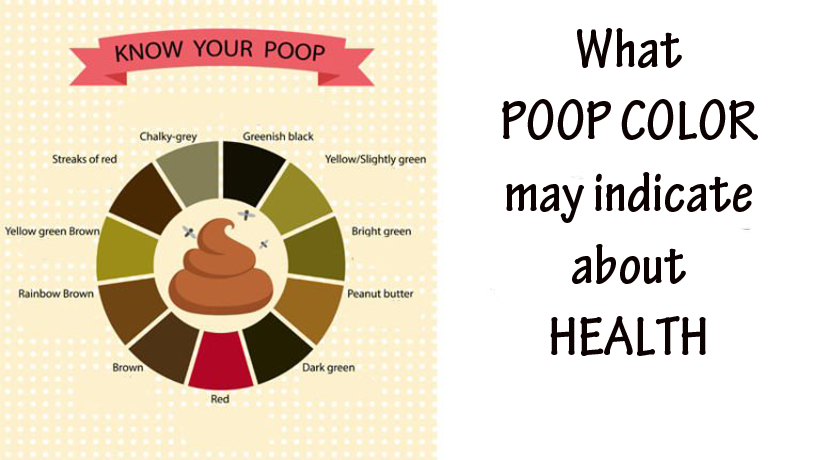 The color of the stool varies from grayish-white to black. In this case, the process of defecation is sometimes accompanied by pain, discomfort in the lower abdomen. With a visible change in the characteristics of the stool, patients often experience negative psycho-emotional sensations caused by the fear of a serious illness. If the color change is physiological in nature, the person does not experience any unpleasant symptoms either during bowel movements or during the day.
The color of the stool varies from grayish-white to black. In this case, the process of defecation is sometimes accompanied by pain, discomfort in the lower abdomen. With a visible change in the characteristics of the stool, patients often experience negative psycho-emotional sensations caused by the fear of a serious illness. If the color change is physiological in nature, the person does not experience any unpleasant symptoms either during bowel movements or during the day.
Changes in stool color are often accompanied by other dyspeptic disorders: nausea, vomiting, abdominal pain, abnormal stool frequency and stool consistency, which indicates the development of diseases of the digestive system. The combination of light gray stools and dark urine usually indicates hepatitis and other acute inflammatory liver diseases. The appearance of a black, brick or red stool during bowel movements is typical for bleeding from the gastrointestinal tract of varying intensity and requires an immediate visit to a gastroenterologist.
Development mechanism
The stool is usually brown, which can vary from light to dark depending on your eating habits. This color is due to the presence of bilirubin metabolic products: stercobilin and mesobilifuscin. A change in the color of feces occurs when dyes enter the composition of food or drugs, the presence of pathological impurities (blood, bile pigments). With diarrhea, the stool becomes golden yellow, as its accelerated passage prevents the conversion of direct bilirubin into stercobilin.
Colorless or gray stools are characteristic of the occurrence of mechanical obstructions on the outflow of bile to the intestines (cholelithiasis, pancreatic formations, duodenum 12), due to which there are no dyes in the feces, which normally form conjugated bilirubin. The stool becomes grayish and clay-like when oral administration of barium sulfate contrast is due to chemical reactions in the stomach and intestines.
The stool may become greenish, which is more common when eating large amounts of fresh vegetables. These foods are rich in chlorophyll pigment, which is not broken down by digestive enzymes and provides the characteristic coloration. A change in the color of the stool to green also occurs with pathological diarrhea, when biliverdin, a precursor of bilirubin, is massively released along with bile, which does not have time to go through all the stages of chemical transformations in the intestine.
These foods are rich in chlorophyll pigment, which is not broken down by digestive enzymes and provides the characteristic coloration. A change in the color of the stool to green also occurs with pathological diarrhea, when biliverdin, a precursor of bilirubin, is massively released along with bile, which does not have time to go through all the stages of chemical transformations in the intestine.
Black coloration of feces appears when taking bismuth salts, which, under the action of saliva, form insoluble complexes with black-gray. Dark color also occurs when iron salts enter the stool. Black, tarry stools (melena) develop during bleeding from the stomach and upper small intestine. The dark color is due to the conversion of hemoglobin to hydrochloric acid hematin under the action of enzymes and intestinal flora. When bleeding from the colon and rectum, hemoglobin is not destroyed, so the stool is red.
Classification
There are physiological changes in stool color associated with certain eating habits or the use of a number of drugs, as well as pathological changes caused by various inflammatory and destructive processes in the digestive tract, biliary system. To make a preliminary syndromic diagnosis, a classification is used that takes into account the nature of the color of the stool:
To make a preliminary syndromic diagnosis, a classification is used that takes into account the nature of the color of the stool:
- The stool is grayish-white. Gray “clay” stools are often passed within a few days of oral administration of a barium sulfate contrast agent. The pale color of feces is associated with a violation of the outflow of bile through the duodenum with pathology of the biliary tract, hepatitis, neoplasm of the pancreas.
- Yellow chair. Yellow is usually seen when food is not digested due to an enzyme deficiency. This color is typical for diseases of the pancreas, malabsorption syndrome, celiac disease. A golden yellow color often indicates an excess of unchanged bilirubin.
- Green stools. A change in color appears with a large amount of lettuce and green vegetables in the diet, a greenish-black color is associated with taking iron supplements. The color changes to green with diarrhea of various origins and severe dysbacteriosis, when the rate of passage of feces through the intestines is disturbed.


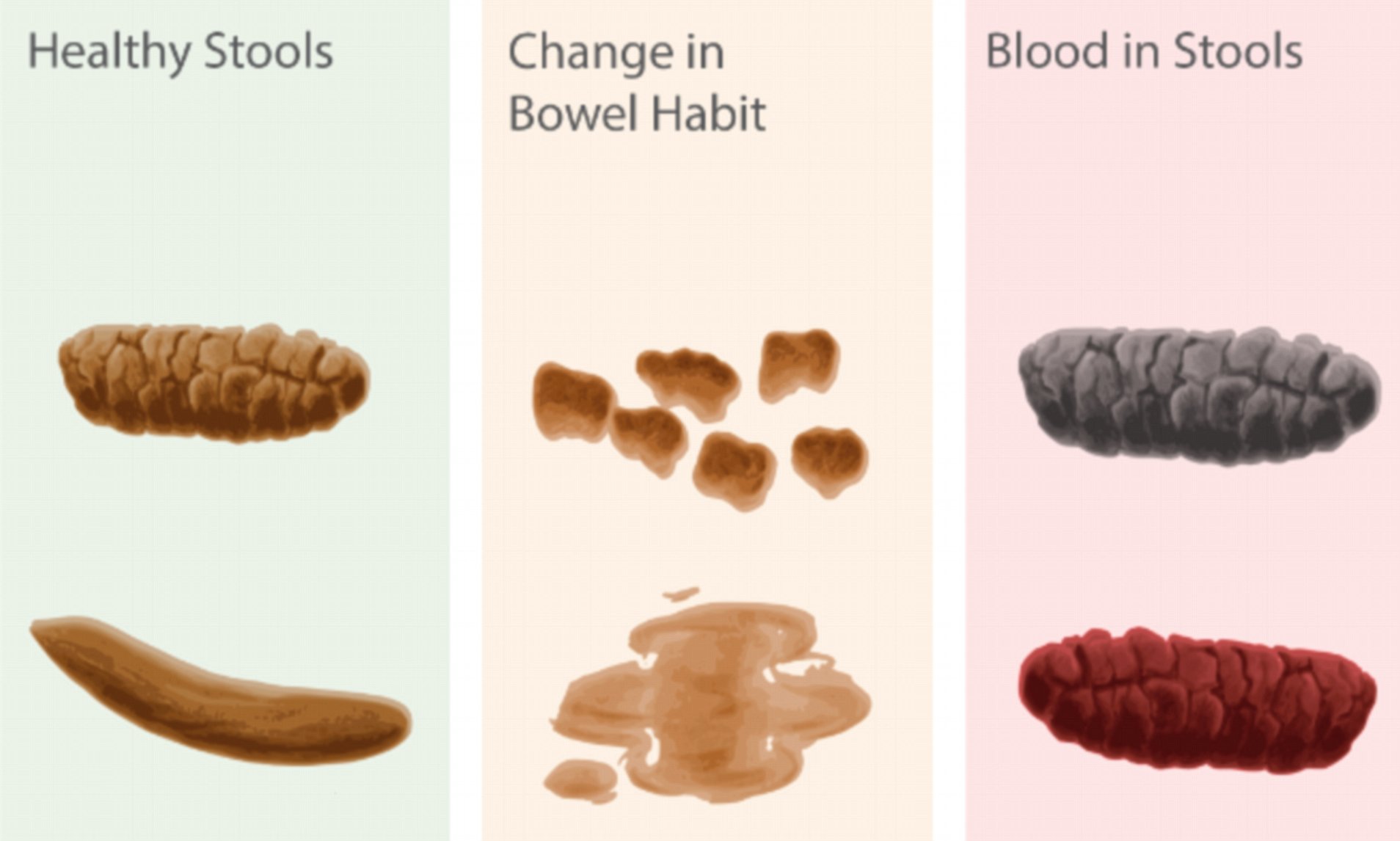
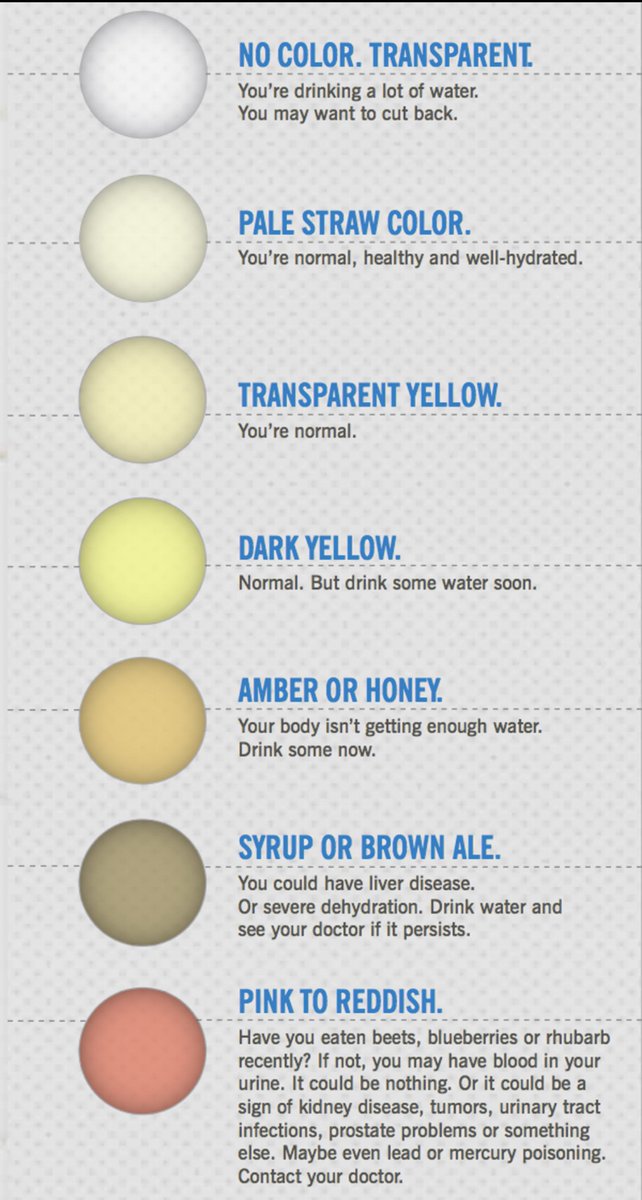 Alternatively, red stool may be due to consumption of red food coloring, cranberries, beets, tomato-based products, or red gelatin.
Alternatively, red stool may be due to consumption of red food coloring, cranberries, beets, tomato-based products, or red gelatin. 8 How to return the color of feces to normal?
8 How to return the color of feces to normal?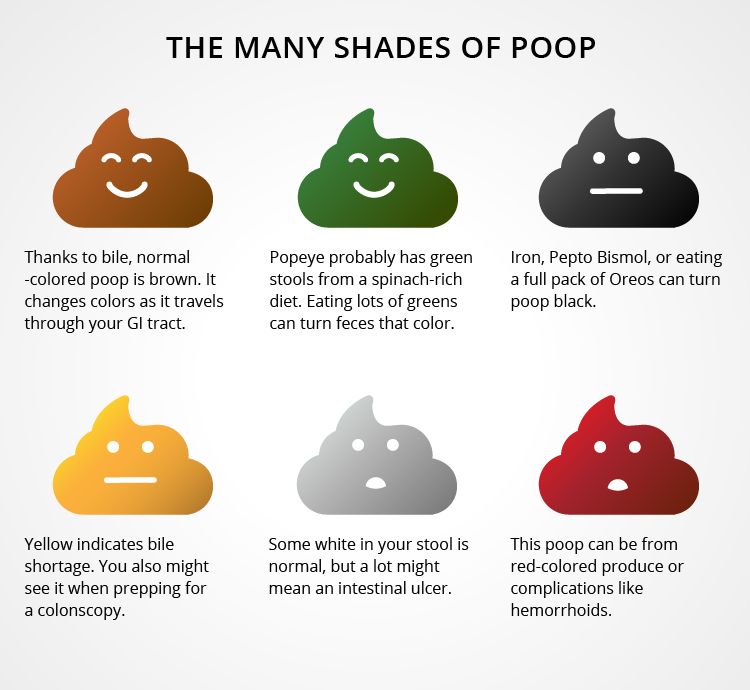
 In the event that the discoloration of the stool was caused by an infection in the gastrointestinal tract, antibiotics will help eliminate the bacteria and restore normal stool color.
In the event that the discoloration of the stool was caused by an infection in the gastrointestinal tract, antibiotics will help eliminate the bacteria and restore normal stool color.